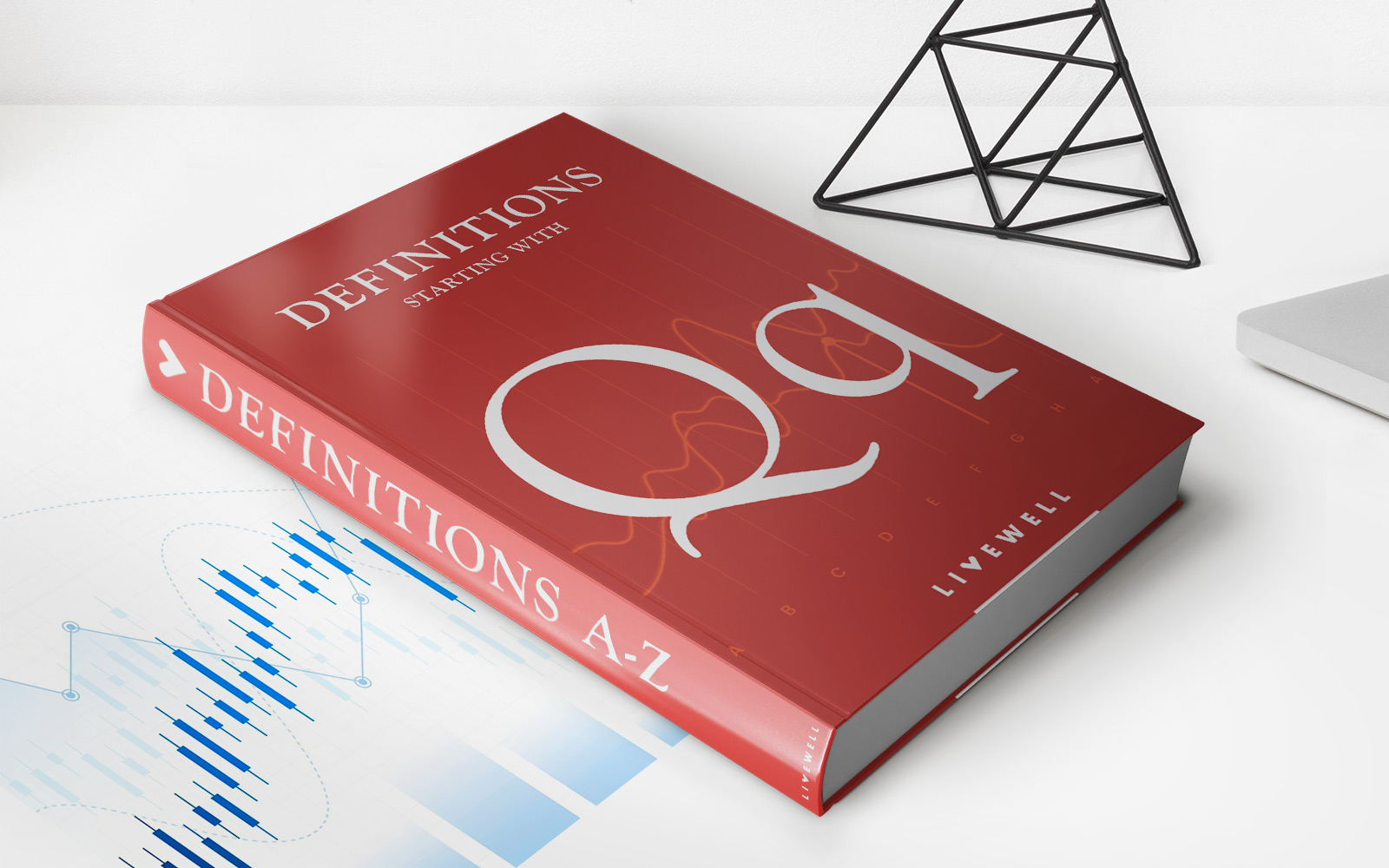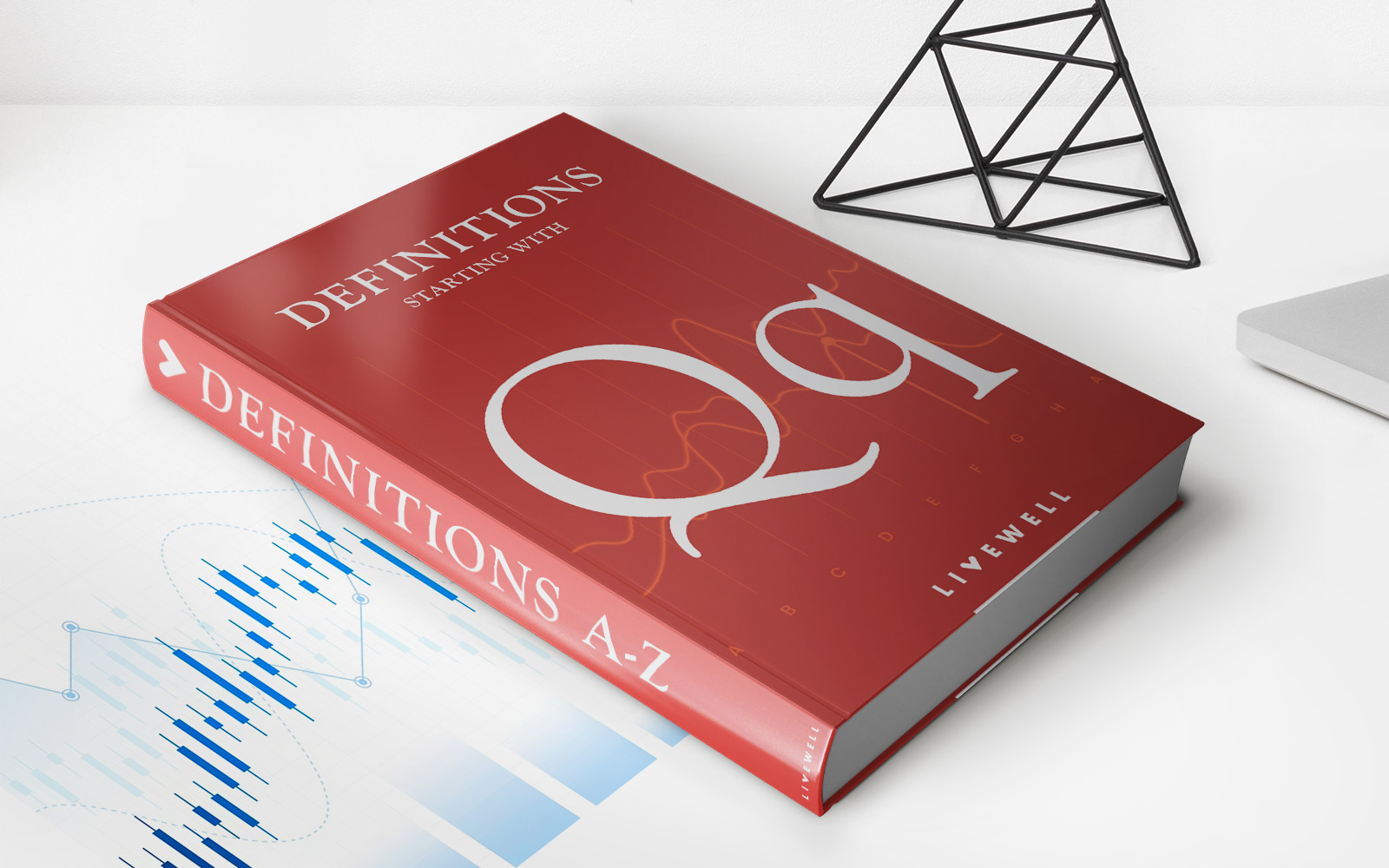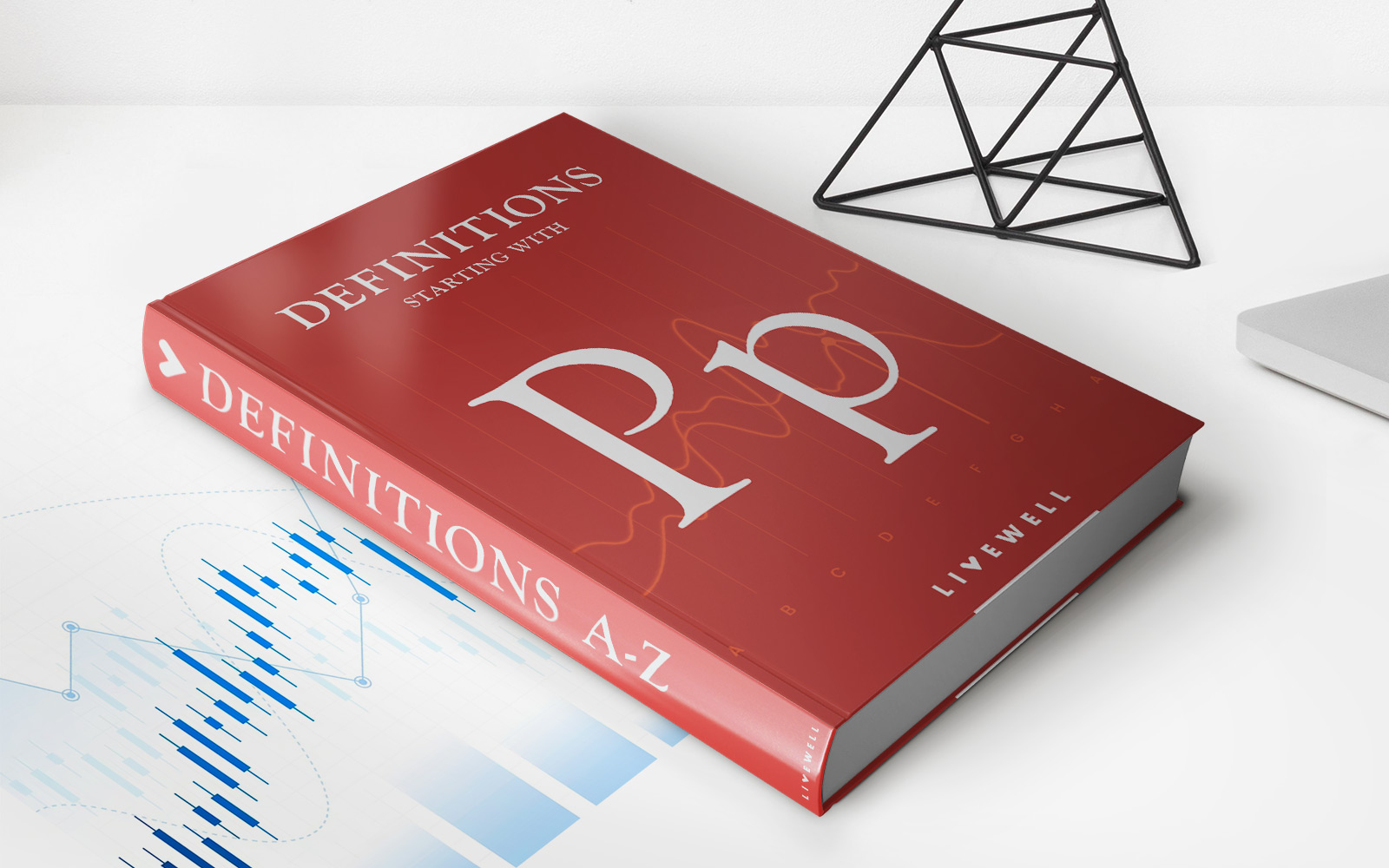

Finance
What Is A Qualifying Widower For IRS Purposes?
Published: November 1, 2023
Learn about the IRS definition of a Qualifying Widower and the financial implications it may have. Understand how this status applies and its impact on your taxes.
(Many of the links in this article redirect to a specific reviewed product. Your purchase of these products through affiliate links helps to generate commission for LiveWell, at no extra cost. Learn more)
Table of Contents
Introduction
Dealing with the loss of a spouse is undoubtedly one of the most challenging experiences a person can face. Amidst the emotional turmoil, it’s important to stay on top of practical matters such as taxes. The Internal Revenue Service (IRS) offers certain provisions to help individuals who have lost their spouse. One such provision is the status of a Qualifying Widower.
Being recognized as a Qualifying Widower by the IRS can have significant financial implications. It allows individuals to enjoy certain benefits and deductions that are otherwise unavailable to them. However, to qualify for this status, certain criteria must be met.
In this article, we will explore the definition of a Qualifying Widower, the filing status associated with it, the requirements for obtaining this status, the duration of Qualifying Widower status, and the benefits that come with it. We will also provide examples to help you better understand how the Qualifying Widower status works.
Understanding the intricacies of the tax code can be complex, especially when dealing with the loss of a loved one. However, gaining knowledge about your filing options can help alleviate some of the financial burdens during this challenging time. So, let’s delve into the details of what it means to be a Qualifying Widower for IRS purposes.
Definition of a Qualifying Widower
A Qualifying Widower, also known as a Qualifying Widow or Widower, is a tax filing status available to individuals who have lost their spouse. This filing status allows individuals to file their taxes as if they were married filing jointly for a certain period of time following the death of their spouse.
To be considered a Qualifying Widower, you must meet specific requirements set by the IRS. These requirements include being unmarried at the end of the tax year, having paid over half the cost of maintaining a home for yourself and a dependent child, and having a dependent child who lived with you for the entire tax year.
The Qualifying Widower status is designed to provide a financial benefit to individuals who have lost their spouse and are responsible for caring for a dependent child. By allowing them to file as Qualifying Widower, they can enjoy the benefits and deductions associated with the married filing jointly status.
It’s important to note that the Qualifying Widower status is only available for a limited time after the death of a spouse. Once the time period for this status ends, the individual will need to choose a different filing status for future tax returns.
Now that we have a basic understanding of what it means to be a Qualifying Widower, let’s take a closer look at the filing status associated with this designation.
Filing Status for Qualifying Widower
The filing status associated with a Qualifying Widower is “Married Filing Jointly” (MFJ). This means that for the tax year in which their spouse passed away, an individual can still file their taxes as if they were married. By filing as a Qualifying Widower, individuals can retain the benefits and deductions that come with the married filing jointly status.
Filing as a Qualifying Widower allows individuals to benefit from lower tax rates, higher standard deductions, and the ability to claim certain tax credits. Additionally, it may also enable them to defer the taxation of inherited assets, such as retirement accounts or real estate.
It’s important to note that in order to file as a Qualifying Widower, the individual must have a dependent child. This child could be their biological or adopted child, stepchild, or foster child. The child must have lived with the individual for the entire tax year and the individual must have provided over half of the child’s financial support.
By filing as a Qualifying Widower, individuals can retain the financial benefits and advantages that come with the married filing jointly status, providing a much-needed sense of stability during a difficult time.
Now that we understand the filing status associated with a Qualifying Widower, let’s explore the requirements that must be met to qualify for this status.
Requirements for Qualifying Widower Status
To qualify for the status of a Qualifying Widower, individuals must meet certain eligibility criteria as established by the IRS. These requirements ensure that the individual has indeed experienced the loss of a spouse and is responsible for the care of a dependent child. The following are the key requirements:
- The individual must be unmarried at the end of the tax year. This means they are not considered legally married under state law.
- The individual must have paid over half the cost of maintaining a home for themselves and a dependent child. This includes expenses such as rent or mortgage payments, property taxes, insurance, utilities, and other necessary household expenses.
- The individual must have a dependent child who lived with them for the entire tax year. This child can be their biological or adopted child, stepchild, or foster child. The child must meet the qualifications of a dependent, including age, relationship, and support requirements.
It’s important to note that if the individual remarries during the tax year, they are no longer eligible for the Qualifying Widower status. In this case, they would need to choose a different filing status for their tax return, such as married filing jointly or married filing separately.
Meeting these requirements allows individuals to file their taxes as Qualifying Widower, which provides them with the benefits and deductions associated with the married filing jointly status. This can have a significant impact on their tax liability and financial situation during a challenging period.
Next, we will delve into the duration of the Qualifying Widower status and how long individuals can continue filing under this designation.
Duration of Qualifying Widower Status
The Qualifying Widower status is available for a limited period of time following the death of a spouse. It provides individuals with the opportunity to maintain the benefits and deductions associated with the married filing jointly status during the transitional phase after the loss of their spouse.
The IRS allows individuals to file as a Qualifying Widower for the two years immediately following the year of their spouse’s death. This means that if your spouse passed away in 2021, you could potentially file as a Qualifying Widower for the tax years 2021, 2022, and 2023.
At the end of this designated time period, individuals must select a different filing status for their future tax returns. They can no longer file as a Qualifying Widower once the time limit expires. The most common options available are to file as single or head of household, depending on their circumstances.
It’s important to note that if an individual remarries before the end of the designated period, they are no longer eligible for the Qualifying Widower status. Marriage terminates the Qualifying Widower status, and the individual would need to select a filing status based on their new marital situation.
Understanding the duration of the Qualifying Widower status is crucial, as it allows individuals to plan their tax filing strategy with the knowledge that this status is temporary. It is advisable to consult with a tax professional or review the IRS guidelines for any updates or changes to the duration of this filing status.
Next, let’s explore the benefits that come with the Qualifying Widower status and how it can positively impact an individual’s tax situation.
Benefits of Qualifying Widower Status
The Qualifying Widower status offers several benefits to individuals who have lost their spouse and are caring for a dependent child. Here are some of the key advantages of filing as a Qualifying Widower:
- Tax rates and deductions: Filing as a Qualifying Widower allows individuals to enjoy the lower tax rates and higher standard deductions associated with the married filing jointly status. This can potentially result in a lower overall tax liability.
- Tax credits: Qualifying Widowers may be eligible for various tax credits, such as the Child Tax Credit and the Earned Income Tax Credit. These credits can help reduce the amount of taxes owed and potentially result in a higher tax refund.
- Capital gains tax: Filing as a Qualifying Widower may enable individuals to defer the taxation of inherited assets, such as real estate or retirement accounts. This can provide financial flexibility and potentially reduce the tax burden when these assets are sold in the future.
- Dependency exemptions: Qualifying Widowers can claim their dependent child as an exemption on their tax return, which may further reduce their taxable income.
- Head of household status: Filing as a Qualifying Widower also grants individuals the advantage of claiming the head of household filing status. This can provide additional benefits, such as a higher standard deduction and lower tax rates compared to filing as single.
These benefits can make a significant difference in an individual’s tax liability and financial well-being during a challenging period. By taking advantage of the Qualifying Widower status, individuals can optimize their tax situation and provide some financial stability for themselves and their dependent child.
Now that we have explored the benefits of the Qualifying Widower status, let’s compare it with other filing statuses to understand its unique advantages.
Comparison with Other Filing Statuses
When it comes to filing taxes, individuals have several options for their filing status. Understanding how the Qualifying Widower status compares to other filing statuses can help individuals make informed decisions about their tax strategy. Let’s compare the Qualifying Widower status with the other common filing statuses:
- Married Filing Jointly (MFJ): The Qualifying Widower status allows individuals to file as if they were married filing jointly for a limited time period after the loss of their spouse. This status provides the benefits of lower tax rates, higher standard deductions, and the ability to claim certain tax credits. However, unlike MFJ, the Qualifying Widower status expires after a specific timeframe.
- Single: After the Qualifying Widower status ends, individuals must file as single unless they qualify for another filing status. Filing as single generally results in higher tax rates and lower standard deductions compared to married filing jointly or as a Qualifying Widower.
- Head of Household (HOH): As a Qualifying Widower, individuals can also claim the head of household status. This status provides certain tax advantages, such as a higher standard deduction and lower tax rates compared to filing as single. To qualify for HOH, individuals must meet specific requirements, including providing over half of the household expenses and having a dependent child.
- Married Filing Separately (MFS): MFS is an option for individuals who are married but choose to file separately from their spouse. The Qualifying Widower status is not applicable when filing separately. In most cases, filing separately results in higher tax rates and fewer tax benefits compared to married filing jointly or as a Qualifying Widower.
By comparing these filing statuses, individuals can assess which option is most appropriate for their tax situation. The Qualifying Widower status provides a unique opportunity for individuals who have lost their spouse and have a dependent child to maintain certain benefits associated with married filing jointly for a limited duration.
Now, let’s dive into some example scenarios to help illustrate how the Qualifying Widower status works in practical terms.
Example Scenarios
To better understand how the Qualifying Widower status works in practice, let’s explore a couple of example scenarios:
Scenario 1: Emma
Emma’s husband passed away in December 2020. She has a dependent child who lived with her for the entire tax year. In 2021, Emma is eligible to file as a Qualifying Widower. As a Qualifying Widower, she can enjoy the benefits of married filing jointly for the tax year 2021. This includes lower tax rates, higher standard deductions, and the opportunity to claim various tax credits. However, starting from the tax year 2022, Emma will need to select a different filing status, such as single or head of household.
Scenario 2: David
David’s wife passed away in June 2021. He has two dependent children who have lived with him for the entire tax year. In 2021 and 2022, David can file as a Qualifying Widower, taking advantage of the benefits associated with married filing jointly. However, if David were to remarry before the end of 2023, he would no longer be eligible for the Qualifying Widower status. In that case, he would need to choose a different filing status based on his new marital situation.
These scenarios demonstrate how the Qualifying Widower status can provide individuals with financial benefits and a transition period following the loss of a spouse. It’s important to consult with a tax professional or refer to the IRS guidelines to ensure eligibility and to understand the specific rules and limitations associated with this filing status.
Now that we have explored the example scenarios, let’s conclude our discussion on the Qualifying Widower status.
Conclusion
The status of a Qualifying Widower provides individuals who have lost their spouse with the opportunity to maintain certain financial benefits associated with married filing jointly. This filing status is available for a limited time following the death of a spouse and allows individuals to ease the transition and address their tax obligations during a difficult period.
To qualify as a Qualifying Widower, individuals must meet specific requirements, including being unmarried, paying over half the cost of maintaining a home for themselves and a dependent child, and having a dependent child who lived with them for the entire tax year.
Filing as a Qualifying Widower offers various advantages, such as lower tax rates, higher standard deductions, potential tax credits, and the ability to defer the taxation of inherited assets. These benefits can have a significant impact on an individual’s tax liability and provide some financial stability during a challenging time.
However, it’s crucial to note that the Qualifying Widower status is temporary. Once the designated time period ends or if the individual remarries, they must select a different filing status for future tax returns.
Understanding the Qualifying Widower status and its requirements empowers individuals to make informed decisions about their tax strategy. Consulting with a tax professional or referring to the IRS guidelines can provide further clarification and assistance in navigating the complexities of tax filings.
While dealing with the loss of a spouse is a challenging experience, being aware of available provisions like the Qualifying Widower status can help individuals navigate their tax responsibilities and ensure they receive the benefits they are entitled to.
It’s important to review your personal circumstances, consult with a tax advisor, and stay updated on any changes in tax laws to make the best decisions for your financial well-being.














